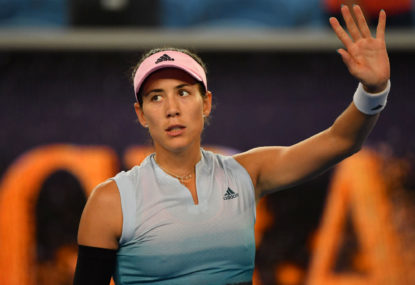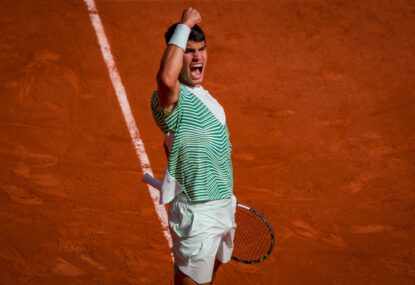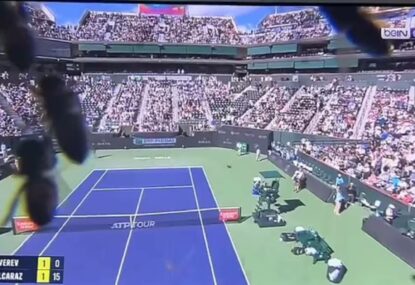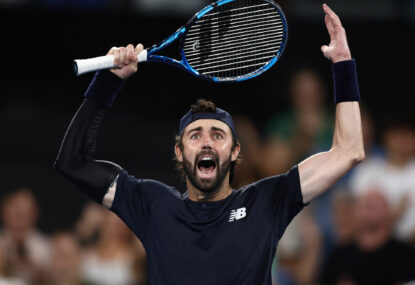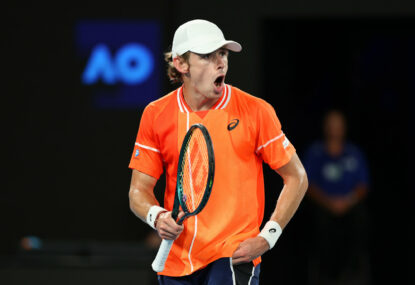Sports lovers worldwide still talk about the knife attack on Monica Seles 23-years ago as if it happened yesterday.
The impact was that severe on the sporting psyche.
So when the world woke up this week to hear about the knife injuries to the playing (left) hand of another Tennis player, Petra Kvitova, from a random attack in her own house by an intruder, the first reaction was – “oh no, not again!”
Four cuts to her left hand, a damaged tendon and two damaged nerves does not bode well for her future of her career at the top tier of the WTA.
It will be at least six months before she is back on the practice courts, and that’s probably being optimistic.
The memories of the Monica Seles episode does not give much confidence about a quick recovery for Kvitova.
Seles had finished both 1991 and 1992 as the world’s top-ranked female player and in 1990, aged just 16, she had become the youngest-ever French Open champion. On April 30, 1993, the tennis world was at her feet.
Having won her eighth Grand Slam title at the Australian Open earlier that year, the Yugoslav was still only 19 when she played her quarter-final at Hamburg’s Rothenbaum in the day’s last match.
Having won the first set against Bulgaria’s Magdalena Maleeva, Seles was resting during a break in play when Gunter Parche, a 38-year-old unemployed tool maker, and admirer of Seles’ main Tennis rival Steffi Graf, plunged a 23cm-long knife into her back.
She lapsed into depression after her attack and her weight shot up by 30kg due to binge eating.
She made her comeback in July 1995 in Atlantic City against Martina Navratilova and eventually won the Australian Open for a fourth time in 1996.
But she never recovered the form she has showed from before her attack and eventually retired in February 2008.
These are the two most well known and documented attacks on sportspersons, but hardly the only ones.
On Dec 6 1975, in Rehovot, Israel, the Maccabi Rehovot FC led the Kfar Gvirol team 1-0 at a regular C-League soccer game, when the referee called for a foul committed on Maccabi’s goalkeeper.
In response, many of the fans burst into the field, and one of the fans, Shimon Kroha stabbed Macabbi’s player Mordechai (Moti) Kind in the heart. Kind died on the grass, and Kfar Gvirol was suspended from any activity indefinitely.
On November 13t 1982, during the second day of the first Ashes Test between Australia and England at the WACA, a group of drunk and drug-affected English fans invaded the pitch after England had passed 400 in its first innings.
One fan, 19-year-old Gary Donnison, hit Australian fast bowler Terry Alderman in the face, and Alderman chased Donnison before trying to tackle him, leaving Alderman with a dislocated shoulder and having to be carried off on a stretcher.
Dennis Lillee and Allan Border tripped up Donnison and pinned him to the ground until police and security arrived.
Alderman spent 18 months on the sidelines before returning in mid-1984.
On October 30 2011, in a Romanian soccer Liga game between FC Petrolul Ploiești and FC Steaua București, when a penalty kick was awarded to Steaua, a Petrolul fan, Dragos Petrut Enache ran onto the field and hit Steaua defender George Galamaz in the face with a heavy object, breaking his cheekbone.
In a horrific incident, perhaps the most brutal in sporting history, on June 30, 2013, during a soccer match in Maranhao, referee Otavio Jordao da Silva ejected Josemir Santos Abreu from the match.
This led to a confrontation which ended in da Silva pulling a knife and stabbing Abreu, who would later die from his injuries.
Fans rushed the field where they tied up da Silva and ruthlessly beat him and stoned him to death.
So while the sporting spirit and the Olympic ideals may govern and guide the way we like to play and watch sports, violence against sportspersons is an unfortunate occurrence that has been repeated time and again.
Most incidents of such violence is however the result of passion on the playing field brimming over until it results in senseless actions.
But when you hear of a random incident like a person pretending to be an electricity meter reader stabbing one of the world’s richest women players at her home, at 8:30am in the morning, to steal two hundred and fifty dollars, you have to shake your head at the utter futility of it all.
Our combined thoughts and heartfelt wishes for a speedy recovery will hopefully help Petra Kvitova heal quickly and come back to rule the top of Women’s Tennis in the not too distant future.
Fight the good fight Petra.






























































































